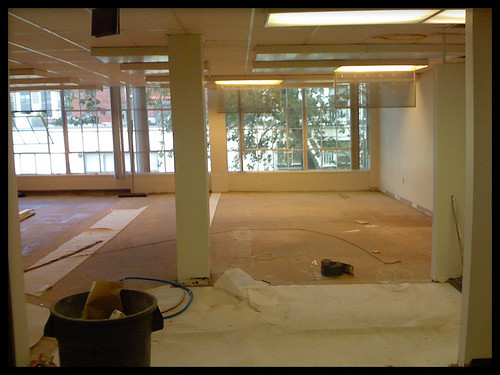It just occurred to me that my first
Skitch
was on July 7th, 2007. 7/7/7. I’ve been meaning to post an article about
how Skitch has changed the way our
team approaches reporting bugs and
communicating ideas visually.
First of all, the Skitch web site advertises
it (see video) as a fun tool for playing
with photos and sharing stuff with friends/family. While this is true, I
think their bigger market could be those of us who work in the web
design and development community. It took a less than a week for Skitch
to become a tool that I rely on the most during my day to day work and
since it keeps surprising me that people aren’t using it and/or haven’t
heard about it… I thought that I’d share how we’re using it at Planet
Argon.
Introducing “LOLBUGZ”
Our team is currently using Lighthouse for
managing bugs/tickets for internal and client projects. If there is one
way to slow down bug fixing cycle.. .it’s the ticket submission process.
It takes a lot of time and commitment to try and communicate some
problems that you’ll find in a web application. This is why screenshots
can be so useful to helping speed up the process. Skitch allows us to
not only provide a screenshot really quickly, but it gives us the
ability to focus our attention with shapes and text, which provides more
context when viewing an image.
For example, here are a few real-world Skitches that I’ve used to report
some problems.
What happened to this drop down?

This pagination needs some CSS-Love!

Oh no! Tags are getting grouped together…

Styling has gone crazy…

I mastered an unordered list! (hooray!!)

This list isn’t scaling anymore…

Side note: LOL BUGZ was a term coined by Rick Olson at Active
Reload to describe the tickets that I post for
Lighthouse. ;-)

Trying out 15 during the initial releases for the iPhone… bug report
sent via twitter to Erik Kastner.

As you can see, using Skitch helps communicate some very specific things
without needing to type a huge description. Of course, we do try our
best to add more context with our tickets. For example, here is a
real-world example of a
ticket
that I posted on Lighthouse. As you’ll see, there are a few skitches
embedded in the tickets, which works much better than attaching
screenshots to tickets.
One of the best features of Skitch is it’s work-flow. Within a few
seconds, I can do the following tasks.
- Take a screenshot of a specific region of my screen
- Add some arrows and text
- Click on Webpost, which will upload directly to myskitch.com
- Click on Share to navigate to the new upload
- Click on the embed textfield and it uses JS to copy the embed
html into my paste buffer
- Paste the html snippet directly into the ticket that I’m reporting
- Submit my LOL BUG
Side note: it also allows you to upload to Flickr, a ftp account, etc.
Over the past four months, Skitch has become one of my favorite OS X
tools. The interface is lightweight and the workflow is almost perfect
(feature request: providing the embed code in my paste buffer without
needing to go to myskitch would be A+)
I’ve also used Jing, which works on Windows
and OS X and does video. I’ve not found it to be as intuitive for
working in this manner. In fact, the work-flow leaves a lot to be
desired. However! It does do video and this has come in handy a few
times for showing people some “live” interaction-type bugs that can’t be
communicated as easily through text/images.
If you’re not using Skitch yet and are on OS X… I highly recommend
that you try it out for a few weeks during a bug fixing sprint. We’ve
gotten our clients and almost everybody on the team using it in this
fashion. The productivity increases haven’t gone unnoticed.
That’s not to say that it’s not fun for point out things that aren’t
related to your project bugs. ;-)



Happy Skitching!
UPDATE
Plasq liked the writeup and gave me 50 extra invites to pass out for
Skitch. So, if you’re in need of one… ask me via
email. Thanks Plasq team!









 {width=”450”}
{width=”450”} {width=”450”}
{width=”450”} {width=”450”}
{width=”450”} {width=”450”}
{width=”450”} {width=”450”}
{width=”450”}











